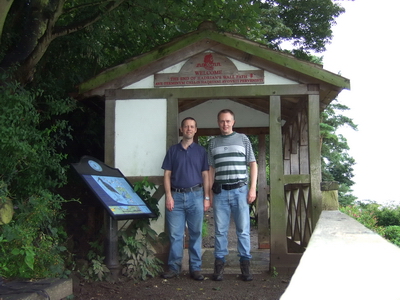
Hadrian's Wall (8/8)
In August 2009 we walked the full length of the Hadrian's Wall footpath from Wallsend in Newcastle on the east coast of England to Bowness-on-Solway on the west coast, a distance of 84 miles.

This is the hut at The Banks, Bowness-on-Solway where the inscription reads:
Welcome - The End of Hadrian's Wall Path
Ave Terminum Callis Hadriani Augusti Pervenisti